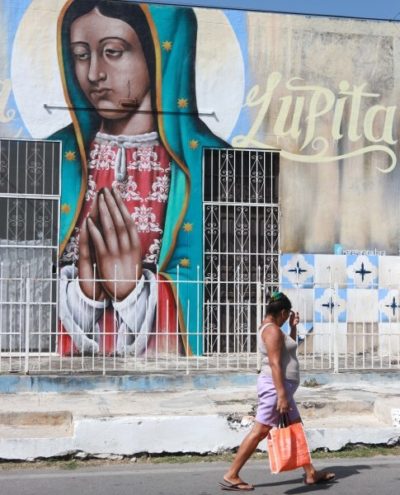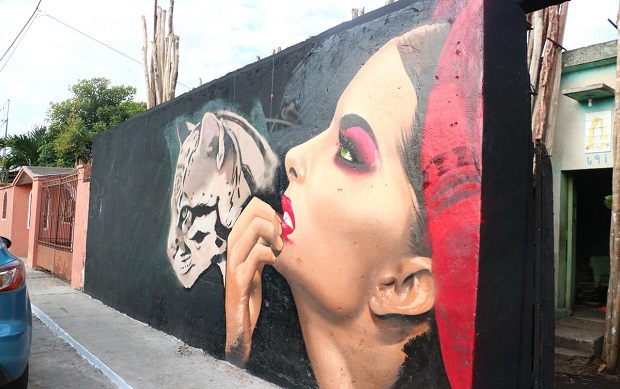Xcalachén is a small neighborhood in the south of Mérida that was famous for its “chicharra” (fried pork skin) a local gastronomic delicacy (if we can call it that). As in other Mérida neighborhoods, time began to wreak havoc and of the eight “chicharronerías” that used to be open, only four remain now.
It was a year ago when two former residents, who like many others, migrated to other areas of the city, devised a way to return to Xcalachén its importance. The idea was well seen by the City Council, thus giving birth to the first Festival de la Chicharra, which was held in July 2017.
For the second edition, in November of the same year, the City Council had the idea of intervening the facades of Xcalachén to make them more colorful. Some of the locals gave their consent, thinking their houses would be painted in a single tone.
The project of the murals involved 15 urban artists that use graffiti techniques, to paint fences and facades of the neighborhood, with the approval of the tenants of course.
“I had no idea what it would be like, I thought they would come and paint my facade in one color,” says Henry Magaña, whose house front now depicts the images of a cardinal and a mestiza.
Miguel Ángel Dzul Evia, from the “Red and black” lonchería, said yes when asked if they could paint his facade. “It seemed to me like a good idea, although I had my doubts, because after saying yes, I was told my business would be painted by graffiti artists”.
Resigned because he had already given his approval, Henry and his family met their home’s facade painter, her name was Paulette González Yáñez “Poli“, who turned out to be a high school teacher. Poli assured them that everything would be professional and there was nothing to worry about.
In addition to “Poli” other artists were selected, such as Alejandro Cetina Tuz (“Nookye”), Jesus Ortiz Marrufo (“Mare”), Carlos Lopez (“Eskriba”), José Gaspar Herrera Campos (“Ache”), Rodrigo Leal Aguilar (“Loyal “), Rosaura Luna Herrera, Maria Adolfina Villegas May (” Finita “), Aldo Martín Cauich Uicab (” Literaldo “), Gustavo Uh Segura (” Ackon “), Joselín Carolina Caamal Álvarez (” Yoyosie “), José Guadalupe Góngora Pacheco (“Lurias”), Ricardo Abraham Santoyo Borges, Omar Alejandro Canto Reyes (“Yester”), Pablo José Moctezuma Méndez and Manuel Pérez (“Vanilla”), as well as “Adán”.
The artists capture fauna, flora, customs, traditions or symbols of Yucatan or Mexico, from a beautiful Xtabay, inspired by a model that was the cover of a magazine, to deer, jaguars, cardinals, mestizas, flowers; characters such as the Virgin of Guadalupe, Pedro Infante, or an allegory of the Maya god of corn, just to name a few.
The project was of such interest that some residents who had initially rejected the idea, ended up changing their mind. Those who did trust from the beginning, today are proud that their facades are cause for admiration. And they constantly see from their windows how people stops to photograph the murals.
“A couple of foreign tourists went by a few days ago and stopped to take pictures, they took photographs of all the facades on our street”, says Rosa Isabel Martín Yam, while preparing turkey salbutes.
“The truth is that now we feel that Xcalachén is more alive than before,” says Henry Magaña.
TYT Newsroom with information from yucatan.com.mx




